The Israel-Hamas war in maps: latest updates

Roula Khalaf, Editor of the FT, selects her favourite stories in this weekly newsletter.
Latest situation
Hamas released some hostages held in the Gaza Strip and Israel freed some Palestinian prisoners on Friday, as a temporary ceasefire took hold after more than six weeks of war.
In the first such exchange since Hamas seized more than 200 hostages in its deadly October 7 attack, the militant group set free 13 Israeli women and children and also released 10 Thai nationals and one Filipino.
Qatar, which mediated the deal, said Israel had freed 39 Palestinian prisoners, all women and children. More than 6,800 Palestinians are currently imprisoned by Israel for various security offences, according to the Israel Prison Service.
Fighting in Gaza and Israel’s bombardment of the territory ceased on Friday morning, before Red Cross trucks ferried the hostages into Egypt as night fell.
Israel’s incursion in Gaza
Israel’s defence forces launched air and land offensives in Gaza after Hamas’s brutal October 7 attack in southern Israel.
Hamas killed about 1,200 people, according to Israeli officials. The militant group, which has controlled Gaza since 2007, also seized more than 200 hostages.
The IDF’s response has killed more than 13,300 people, according to Palestinian officials.
A temporary truce began on Friday to set the stage for the staggered release of 50 women and children held by Hamas and 150 Palestinian prisoners in Israel. The ceasefire is due to last four days if the two sides comply with the deal.
Since launching its incursion, Israel’s military has been tight-lipped about how many troops it has committed to its biggest operation in years.
But data tracking the movement of Israeli forces prior to the truce showed them tightening their hold on Gaza City and surrounding al-Shifa hospital.

Satellite imagery published by Planet Labs from October 31 also showed a significant invasion.
After breaching the barrier wall in at least six places, vehicle tracks showed how Israel’s columns cut through the sparsely populated farmland to the south of the border, before making their way deeper into Gaza towards more populated areas.

Aid agencies have been warning about the dire humanitarian conditions in Gaza since the war began, including a lack of water, medicine and food as well as insufficient fuel to keep hospitals and communications networks running.
The temporary ceasefire has paved the way for the biggest humanitarian convoy into Gaza since the war started. The UN said 137 trucks carrying aid had made it to the territory after travelling through the Rafah crossing between Egypt and Gaza. In addition, 129,000 litres of fuel was delivered to the enclave on Friday.
Gaza’s sole power plant went offline on October 11 after it ran out of fuel, with the outage captured by night-time satellite imagery.
Satellite data shows the toll the war has taken on Gaza’s infrastructure and homes, with much of the Palestinian enclave’s north in ruins and entire neighbourhoods destroyed.

October 7 — how events unfolded
As much of Israel slept, Hamas militants launched an unprecedented, multipronged dawn assault on the country from the Gaza Strip. The Middle East’s most powerful security force was caught off guard.
Launched on the Jewish holiday of Simchat Torah, the assault began in the early hours with thousands of rockets fired at Israeli towns and cities. The barrage set off warning sirens across the south and centre of the country, sending citizens fleeing to air-raid shelters.
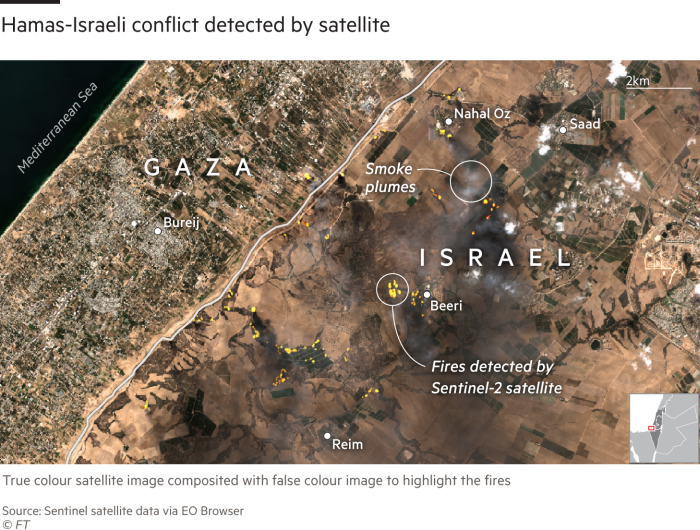
Israel’s military said Gaza-based militants launched more than 4,500 rockets over the weekend. Many were intercepted by Israel’s Iron Dome defence system, but satellite imagery showed fires and plumes of black smoke rising from some locations that had been hit.
Hundreds of Hamas fighters simultaneously attacked by land, air and sea, repeatedly breaching the fortified barrier between Gaza and Israel.

Images and videos showed motorbikes carrying armed militants riding through a hole in a wire fence along the border and a bulldozer destroying part of the barrier. Bombs, rockets and drones could also be seen blowing up the fence as well as defensive positions.

Militants used motorised paragliders to attack the Supernova music festival, not far from the Gaza border, flying in and turning the two-day rave into the site of a massacre.
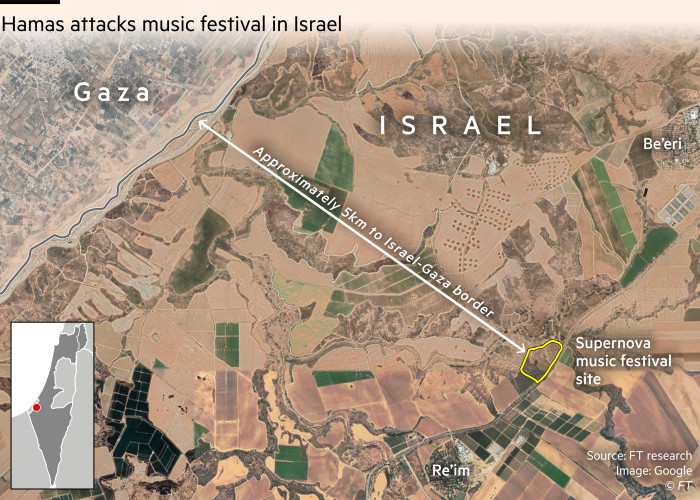
Gunmen chased young Israelis across the desert, shooting and snatching people to take back to Gaza as hostages. The Israeli military failed to respond for hours, apparently caught by surprise by the attack. Hundreds of bodies have been recovered from the site.

After breaching the Gaza fence, armed Hamas fighters began targeting Israeli communities at several locations, going door-to-door and taking hostages.
Images and video show people lying dead in the streets after execution-style killings and residents including women, children and the elderly being taken away.
The Hamas militants also attacked Israeli military sites.
More than 1,200 Israeli civilians and troops were killed, the IDF said — making it the deadliest attack on the country since its foundation.
The complexity of the assault by Hamas was unlike anything Israel has witnessed in decades. It raised serious questions about the security service’s intelligence gathering and the military’s preparedness for an attack.
Israeli prime minister Benjamin Netanyahu imposed a “complete siege” on Gaza on October 9, calling up a record 300,000 reservists and ordering the strip to be pounded from the air.
Israel’s military also ordered the evacuation of 42 communities along its northern border, where Israelis have died in cross-border fire that Israel blamed on Hizbollah or Lebanon-based Palestinian factions — part of the Iran-backed “Axis of Resistance”.
Visual and Data team: Peter Andringa, Steven Bernard, Chris Campbell, Sam Joiner, Lucy Rodgers and Alan Smith



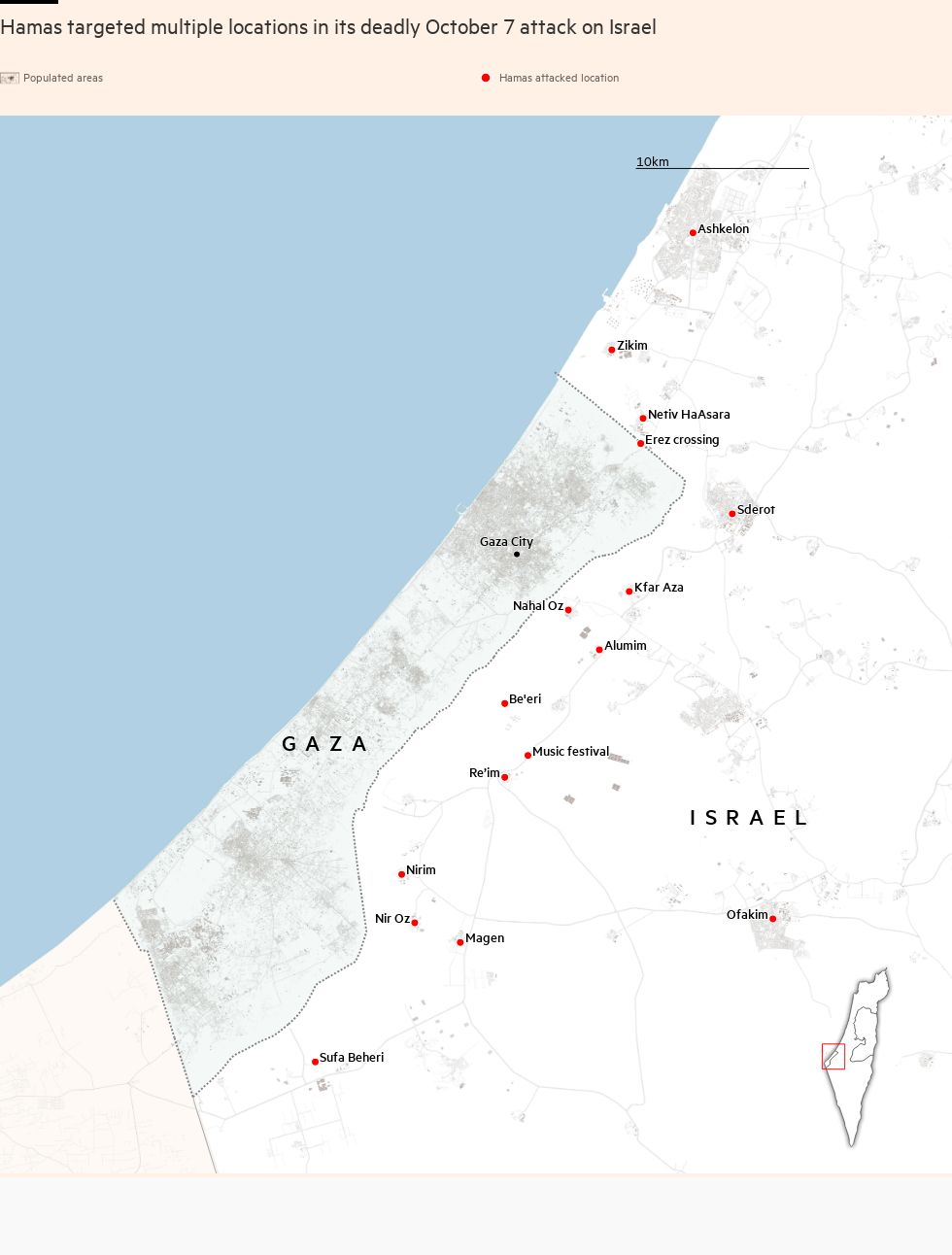
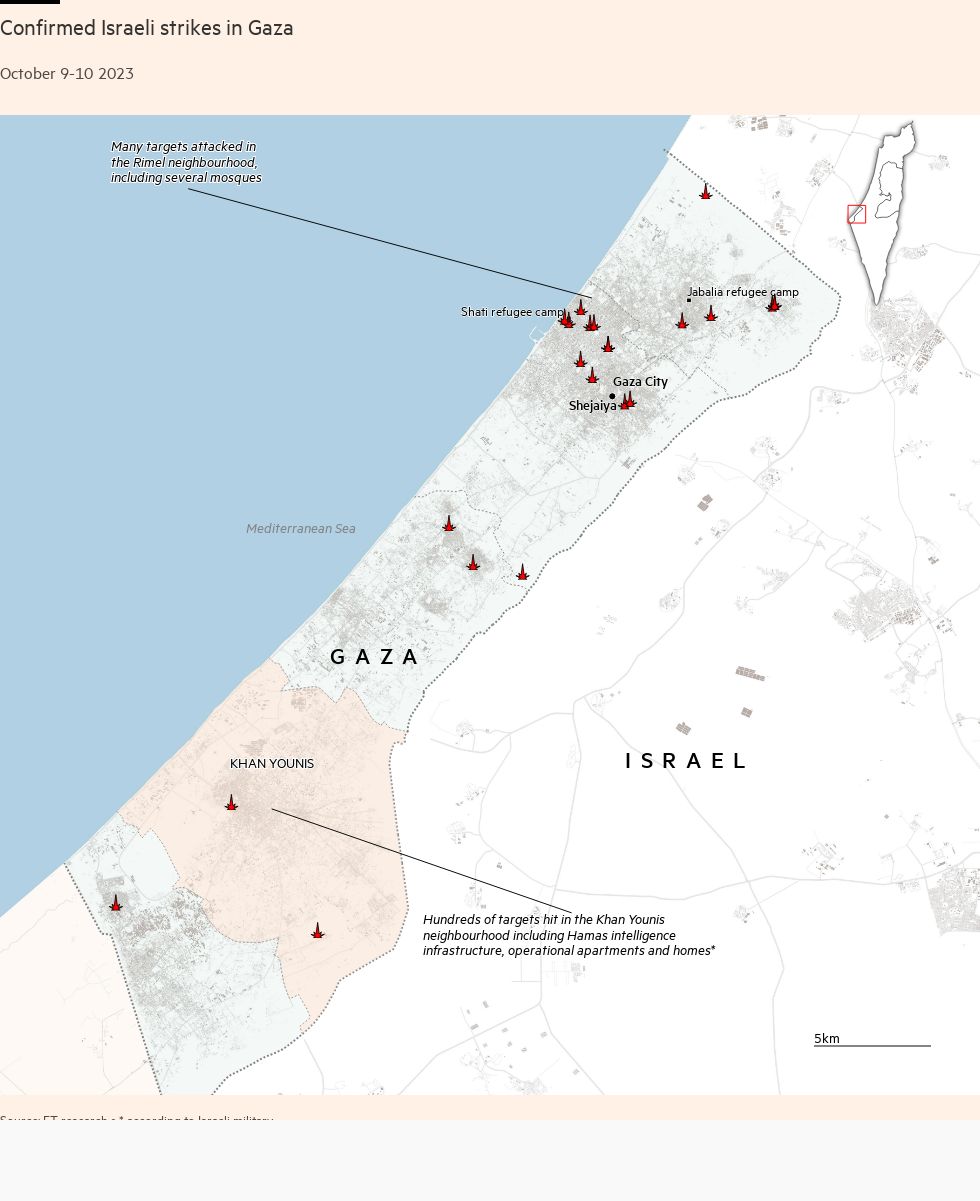
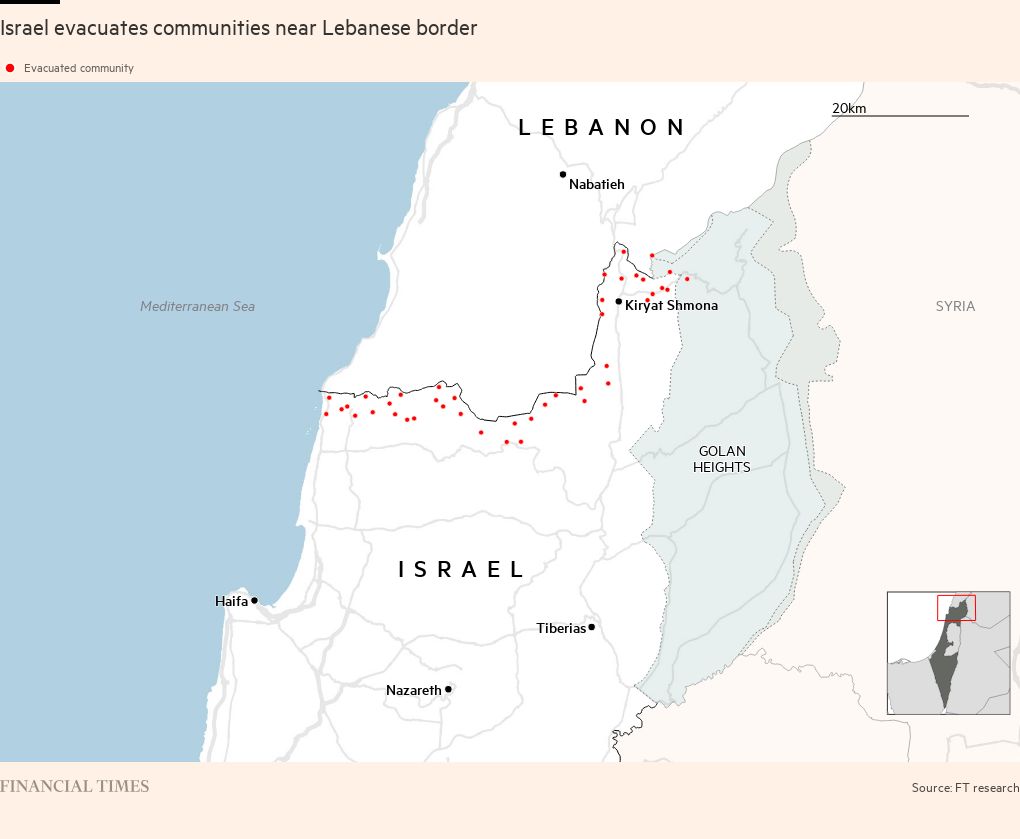
Comments